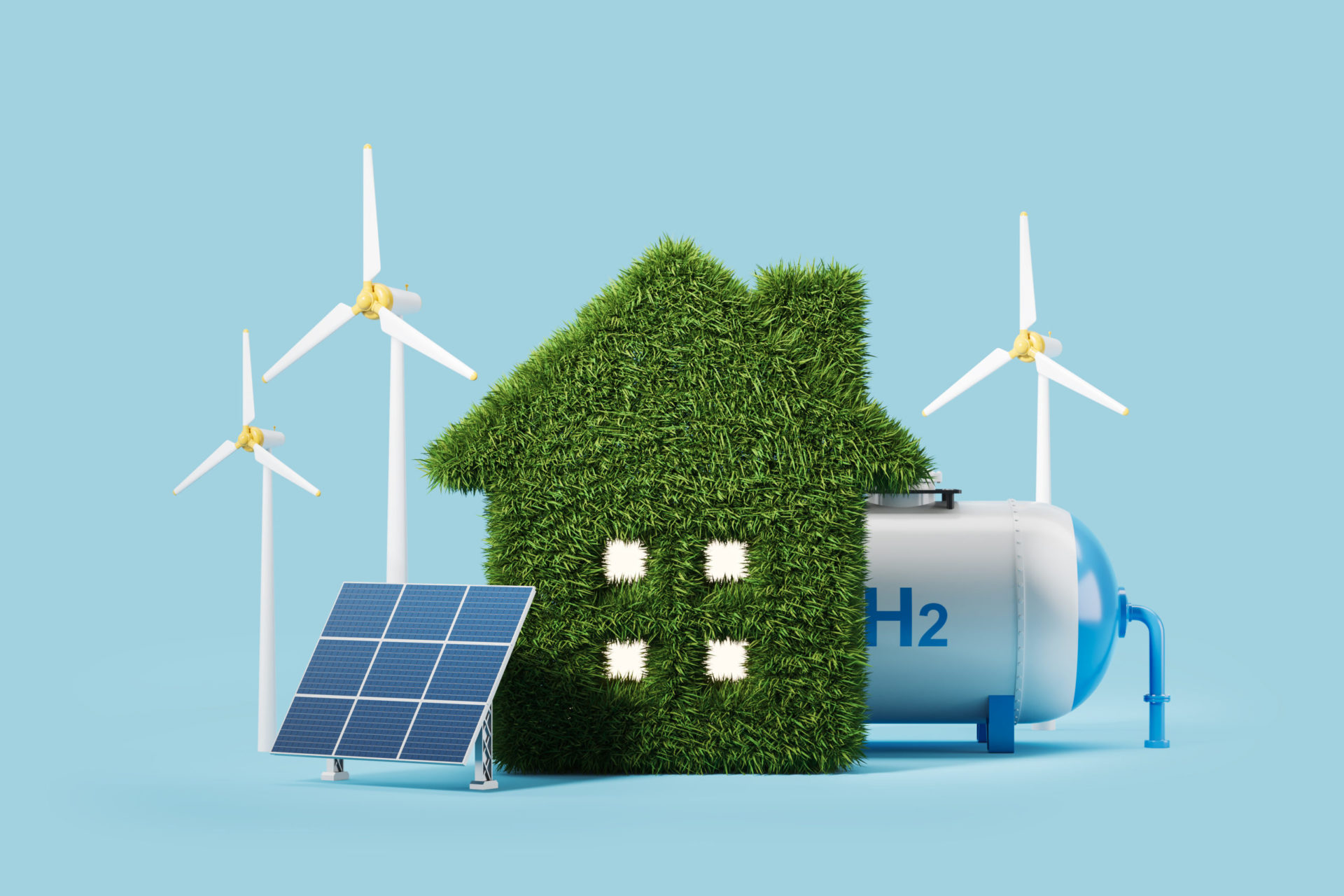Tomáš Matuška from the University Centre for Energy Efficient Buildings (UCEEB) presented the latest experience with the possible energy use of hydrogen in buildings. Hydrogen technologies are a promising solution to the seasonal imbalance of consumption and production of electricity from RES, which are, however, still in the development stage and economically uncompetitive.
The technical characteristics of hydrogen, its production possibilities and basic consumption options were presented. The use of fuel cells seems to be the most suitable for use in buildings. A typical hydrogen energy system consists of a renewable electricity source, most often a photovoltaic system, a buffer battery storage, an electrolyzer for hydrogen production, a hydrogen storage tank and a hydrogen cell for electricity and heat production. A typical installation may look like the following.
Source: T. Matuška, L. Putta. Energy use of hydrogen in buildings. Presentation of 2 December 2022.
The biggest economic barrier is hydrogen accumulation, but it is also a necessity for the functionality and efficiency of the energy system. In the example given, the cost of the storage tank represents 70% of the total cost, which amounts to over 5 million euros. The cost of the storage tank is over CZK 5 million (comparable to the purchase price of a family house and the normal cost of competing technologies).
Hydrogen technologies must also overcome other challenges. For the time being, there is a lack of support in laws and public strategies, from the national energy concept to the possibility of injecting hydrogen into the gas grid to standards and safety regulations for the injection, transport, distribution and use of hydrogen. The availability of trained personnel from installation to maintenance of hydrogen facilities is also an issue.






